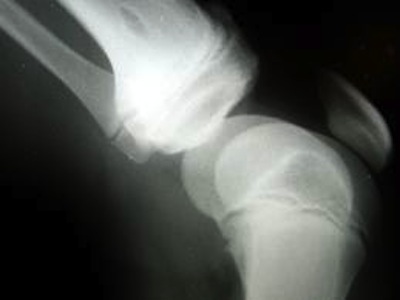
According to a new study, patients with painful bone metastases are likely to benefit from a second round of analgesic radiation, irrespective of treatment schedule and/or plan.
Around half of patients treated with either 8 Gy in a single fraction or 20 Gy in several fractions had less pain following treatment, Dr. Edward Chow of the Sunnybrook Odette Cancer Centre at the University of Toronto and co-workers discovered. The advantage was noticeable whether or not the patients had responded to their first round of radiation.
Even though there is evidence that recurring radiation can be an effective analgesic treatment in patients with painful bone metastases, Chow and his team delineate in Lancet Oncology, of today the best possible dose and fractionation schedules for repeat treatment have not yet been determined/assessed.
To investigate, the researchers randomly assigned 850 patients to either 8 Gy or 20 Gy; the 20 Gy were administered in five to eight fractions.
The study's primary endpoint was overall pain response at two months, or the total number of patients who had a complete response and those who had a partial response. A complete response was defined as a Brief Pain Inventory worst-pain score of zero with no increase in daily oral morphine equivalent.
Partial responses were regarded as persisting pain with a worst-pain score reduction of at least two points and no increase in morphine consumption; or no increase in pain and a reduction of at least 25% in morphine consumption.
Around a third of the patients in each cohort could not be evaluated at two months. Based on a per-protocol analysis, 116 of 258 patients (45%) given 8 Gy had an overall pain response and 134 of 263 patients (51%) in the 20 Gy group had an overall response. Using an intention-to-treat analysis, response rates were 28% and 32%, respectively.
Of the 466 patients for whom data were made available on quality-of-life pain scores, 68% revealed improvement.
The most prevalent side effects at 14 days were loss of appetite (56% of patients given 8 Gy vs. 66% of patients given 20 Gy; p=0.011) and diarrhea (23% and 31%, respectively; p=0.018). A comparable number of patients in both groups sustained pathological fractures, while seven (2%) of the patients in the 8 Gy group and two (<1%) in the 20 Gy group had spinal cord or cauda equina compressions (p=0.094).
"In patients with painful bone metastases requiring repeat radiation therapy, treatment with 8 Gy in a single fraction seems to be non-inferior and less toxic than 20 Gy in multiple fractions; however, as findings were not robust in a per-protocol analysis, tradeoffs between efficacy and toxicity might exist," Chow and his team note.
"We've been waiting for a study like this for 20 years, I honestly didn't know it would ever get done. This was a hard study to get together and get finished, and they did a really good job,” said radiation oncologist at the Blanchard Valley Regional Cancer Center in Findlay, Ohio, Dr. Stephen Lutz.
Lutz is the principal author of the American Society for Radiation Oncology's guidelines on palliative radiotherapy for bone metastases, and did not participate in Chow's research.
"External beam radiation is very effective in getting rid of pain from bone metastases. For the people that it doesn't work on, there's always been some question over whether it should be tried a second time. And the findings show that a second trial does work for many patients. There's all sorts of ways to deal with pain, but something easy and quick is really welcome,” he added.
In an accompanying editorial, Dr. Carsten Nieder of Nordland Hospital in Bodo, Norway wrote that it was “unfortunate that so many patients in the study did not complete the two-month assessment, leaving uncertainty about the differences between the two treatments; that is quite typical for trials of palliative treatment in patients with limited life expectancy.”
Nonetheless, he added, in patients for whom a more multifaceted treatment would obviously be onerous; for example, those with a limited life expectancy or who live far from a radiation oncology facility, the discoveries verify that a single fraction is the suitable choice.
"Whether baseline factors that were not analyzed in the study, for example, small or large volume disease, sclerotic or lytic lesions can predict who might benefit from multiple fractions needs further clarification, ideally in studies stratified for tumor characteristics," he wrote.











